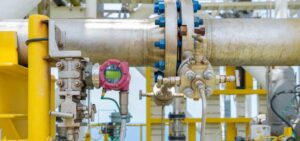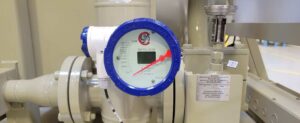The Rising Importance of Ultrasonic Flow Meters in Industry
In the dynamic world of industrial flow measurement, the emergence of ultrasonic flow meters marks a significant technological advancement. These devices have become increasingly crucial in various sectors, driven by the need for more precise and efficient flow measurement solutions. Ultrasonic flow meters, known for their accuracy and versatility, are reshaping how industries approach fluid management. Their growing popularity underscores a shift towards innovative technologies that offer enhanced performance and reliability. This article delves into the intricacies of ultrasonic flow meters, exploring their design, advantages, and the transformative impact they have on industrial processes.
What are Ultrasonic Flow Meters?

Ultrasonic flow meters represent a leap forward in flow measurement technology. Utilizing high-frequency sound waves, these meters measure the rate of fluid flow in a pipe without any physical contact. The core principle involves transmitting ultrasonic sound waves through the fluid and measuring the time they take to traverse the pipe. This time variation, influenced by the fluid’s movement, provides an accurate measure of flow rate.
Design and Operational Principles
- Sound Wave Transmission: Ultrasonic flow meters use transducers to emit and receive sound waves, creating a detailed picture of fluid flow.
- Time of Flight Measurement: The cornerstone of their precision is the exact measurement of the duration sound waves take to traverse a set distance. This aspect is crucial for ensuring the meter’s accuracy in various conditions.
- Non-Invasive Approach: A standout feature of these meters is their ability to measure flow rates without direct contact with the fluid. This characteristic facilitates straightforward installation processes and minimizes any interference with existing pipeline setups.
The fundamental working principle of these meters is not only a testament to innovative engineering but also mirrors the progress in contemporary flow measurement technologies. Their capability to deliver precise flow data without needing to penetrate the pipeline system renders them a versatile option for numerous industrial applications.
Advantages of Ultrasonic Flow Meters
Ultrasonic flow meters offer a multitude of benefits, making them a preferred choice across various industries. Their unique features and capabilities address many of the limitations found in traditional flow measurement devices.
Key Benefits
- Exceptional Precision and Dependability: Ultrasonic flow meters are celebrated for their remarkable ability to measure flow rates with high precision. This accuracy is crucial for ensuring reliable data for both process control and billing purposes.
- Minimal Contact Measurement: The design of these meters allows for measurement without direct contact with the fluid. This approach significantly reduces wear and tear, contributing to a longer lifespan for the meter and diminishing the need for frequent maintenance.
- Versatility and Flexibility: Capable of measuring a wide range of fluids, ultrasonic flow meters are adaptable to different industrial environments and applications. Learn more about the applications and advantages of ultrasonic meters.
- Ease of Installation and Maintenance: Their design allows for easy installation and minimal maintenance, making them a cost-effective solution for many businesses.
The combination of high accuracy, non-invasiveness, and versatility makes ultrasonic flow meters an invaluable tool in industries where precise flow measurement is paramount. Their role in enhancing operational efficiency and accuracy cannot be overstated.
Based on my extensive research and experience in the field, it’s evident that ultrasonic flow meters are not just tools but critical components in modern industrial processes. Their ability to provide accurate, efficient, and reliable measurements is revolutionizing the future of flow measurement.
Applications Across Industries
Ultrasonic flow meters are now integral in numerous industries, each with its distinct demands and obstacles. Their flexibility and accuracy position them as a preferred solution for a variety of operational needs.
Diverse Industrial Uses
- Water and Wastewater Management: In water treatment plants, these meters play a crucial role in monitoring water and wastewater, flows aiding in efficient resource management and leakage detection.
- Oil and Gas Industry: They are used for the precise measurement of hydrocarbons, ensuring accurate billing and process control in pipelines and refineries.
- Chemical Processing: Ultrasonic flow meters are invaluable in managing the flow of chemicals, especially where safety and accuracy are paramount.
- Food and Beverage Sector: Ensuring consistent quality and correct formulation in food processing relies heavily on accurate flow measurement, a task well-suited for ultrasonic technology.
Their wide-ranging applications highlight the versatility and effectiveness of ultrasonic flow meters in meeting the diverse needs of different industries.
Addressing Common Questions
Common questions about ultrasonic flow meters often revolve around their functionality, suitability, and maintenance. Addressing these queries is essential for a comprehensive understanding of the technology.
Frequently Asked Questions
- How accurate are ultrasonic flow meters?: They are known for their high accuracy, especially in clean, homogeneous fluids with accuracies up to 0.5%.
- Can they measure all types of fluids?: While highly versatile, certain factors like fluid homogeneity and the presence of solids or air can affect their performance. However, some designs can work effectively with up to 30% particles and bubbles.
- What about installation and maintenance?: Their non-invasive nature simplifies installation, and they generally require less maintenance compared to invasive meters.
Clearing up these common misconceptions helps in better understanding and utilizing ultrasonic flow meters effectively.
Choosing the Right Ultrasonic Flow Meter
Selecting the appropriate ultrasonic flow meter involves considering several key factors to ensure it meets the specific requirements of your application.
Selection Criteria
- Fluid Characteristics: The specific properties of the fluid, such as its viscosity and the presence of particles and bubbles, play a vital role in the selection process.
- Flow Range: Matching the meter’s flow range with your application ensures optimal performance.
- Pipe Size and Material: The meter must be compatible with the existing pipeline in terms of size and material.
Careful consideration of these factors will guide you in choosing the right ultrasonic flow meter, ensuring it performs accurately and efficiently in your specific process environment.
Innovations and Future Trends
The field of ultrasonic flow measurement is continuously evolving, with new innovations and trends shaping its future. These advancements are not only enhancing the capabilities of ultrasonic flow meters but also expanding their applicability in various industries.
Cutting-Edge Developments
- Integration with IoT and Smart Technology: Modern ultrasonic flow meters are increasingly being integrated with IoT, allowing for real-time data monitoring, analysis, and remote management. This integration facilitates predictive maintenance and improved process control.
- Refined Signal Processing: Innovations in signal processing algorithms aim to boost the accuracy of ultrasonic flow meters, especially in environments with substantial solid particles or air bubbles.
- Compact Design and Mobility: The industry is witnessing a shift towards smaller, more transportable ultrasonic flow meters. This change facilitates simpler installation and broadens their applicability across various scenarios.
- Broader Operational Scope: Recent technological improvements are enhancing the range and sensitivity of these meters, making them effective for measuring both extremely low and high flow rates.
These innovations are not just expanding the capabilities of ultrasonic flow meters but are also paving the way for their increased adoption in industries that were previously reliant on traditional flow measurement methods.
Embracing Ultrasonic Technology for Optimal Flow Measurement
In conclusion, ultrasonic flow meters signify a major advancement in flow measurement technology. Their accuracy, flexibility, and ability to adapt are invaluable in numerous industrial settings. With ongoing technological progress, these meters are poised to play an even more crucial role in industrial operations. For professionals seeking efficient, accurate, and reliable flow measurement solutions, embracing ultrasonic technology is a forward-thinking choice. The future of industrial measurement and control is bright with the continued innovation and application of ultrasonic flow meters.





